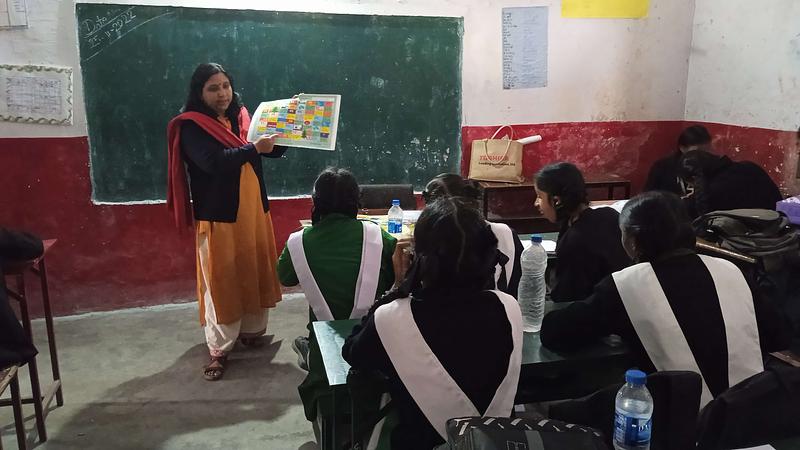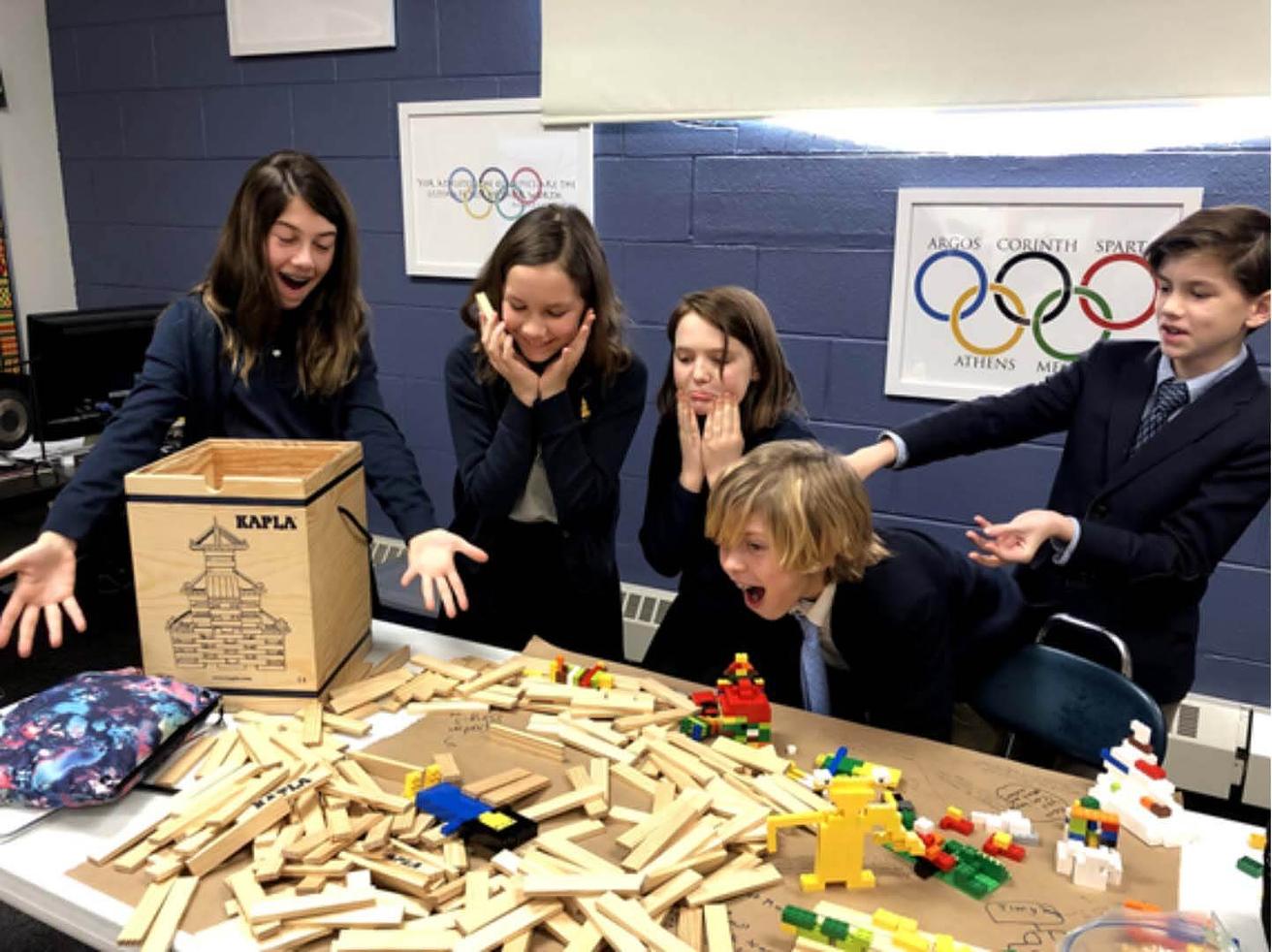“Games are not passive, they give us agency. That means there’s a greater ability to learn new concepts and systems and try things out and fail and try again, to see failure as a means of progression, not the end game,” says Deborah Mensah-Bonsu, Give Back at Supercell.
What if school were a game? was the central theme HundrED and Supercell explored with this Spotlight on Gamified Curricula, which had three main goals.
“We wanted to have a better understanding of the latest and best innovations in gamified curricula, gather guidance for existing and new projects and discover innovations that blend the physical and digital for greater access,” Mensah-Bonsu explains. Addressing preparation for work life and social-emotional learning were also considered key factors.
What did the Spotlight illuminate?
Gamification’s close linkage with edtech and artificial intelligence, as well as its promise of motivating and engaging learners, make it a popular method in classrooms globally. The Spotlight’s goal was to go beyond individual lessons to discover innovations that gamified an entire curriculum. But in conducting the search for solutions that fit these criteria, we realised that there is still a lot of opportunity in the education space for solutions that bring gamification to the curriculum level.
Each of the 12 selected innovations has its own perspective, and provided different levels of attention to the complex criteria of the Spotlight, which included targeting marginalised students aged 16-25; fostering mental health, belonging, and/or empathy; and focusing on whole individuals rather than just technical skills. Aiming to fuse the physical and digital, and bridge the gap between education and working life, were also important qualities.
“Through the process of this Spotlight we learned that despite its existence for more than a decade, gamification is still new ground,” Mensah-Bonsu shares.
The selected innovations enhance skills for work, creativity, problem-solving abilities, and overall learning experiences. Within the collection, we found some overarching themes:
Covid provided an opportunity for gamified innovations. Enterprise Adventure used its gamified platform to reach individual students outside the classroom with lessons in entrepreneurship, while Seppo brought teachers and learners closer together through its app, which turns learning into a journey with different pathways. For both innovations, strategies adopted during Covid are now paying off in the continued scaling of their innovations.
Reaching marginalised groups and under-resourced communities is a great way to employ gamification. Code Mitra brings coding without computers to the gullies of India, aiming to increase representation from the less-advantaged in programming careers. imagi motivates girls and non-binary learners to learn coding through exciting, gamified tasks to program an imagiCharm. The Loop and Fammi vedere la luna (Show me the moon) provide juvenile detainees with an outlet for telling their own stories through an escape room game. Their program also teaches empathy for those in juvenile detention centres.
UN Sustainable Development Goals (SDGs) are very important to learners’ futures. In Games and Hands-on Activities for Future Ready Maker Education in 21st Century, participants engage in experiential, hands-on learning through videos, board games, and card games, focusing on STEM, sustainability, and SDGs. Similarly, Digital Influx and Lumi embed SDGs into their curricula, which highlight the importance of building real world skills like user experience (UX) and design thinking to solve globally relevant problems.

Image Credit: Games and Hands-on Activities for Future Ready Maker Education in 21st Century
Learner-centredness is a hallmark of gamification. Change Architects empowers educators and learners to make powerful changes in their community through design thinking and levelling up their skills. Stages of Autonomy: growing the skills of becoming a lifelong learner is a framework that supports learner-centred advancement toward building autonomy. NASEF’s Scholastic Esports’ mission is to not only engage students in all aspects of work-life preparation through games, but to also organise their club activities in a gamified way, ensuring that every individual in the club has a role to play.
Most strikingly, but unsurprisingly, gamification benefits from communities of practice. EMC² Learning provides teachers the community, resources, and training they need to authentically gamify their lessons while Seppo has a library of resources for teachers, and Change Architects supports and is supported by educators meeting together to grow and improve the program.
Gamification takes intentional effort. Teachers need the support of a like-minded community to increase their success in implementing a gamified curriculum. It requires buy-in from decision-makers, especially from policy and resource allocation perspectives since the curricula must fit within the set educational standards. This can take time to get approval. Even if the resources are provided for free (as several of these innovations are), the professional development piece has a cost.
“Even though there might be some unsolved challenges for scalability, we believe that gamified curricula can bring together play, EdTech solutions, and self-paced learning in the school environment and these innovations pave the way for those who really want to promote gamification on a systems level,” said Lasse Leponiemi, Executive Director at HundrED, of the results of the Spotlight.
The report was launched March 4, 2024 at SXSWEDU where the Spotlight on Gamified Curricula was also launched a year before. HundrED and Supercell extend their gratitude to the 65 Advisory Board members who took part in reviewing the innovations, as well as to everyone who submitted their innovation for review.
Selected Innovations:
- Change Architects
- Code Mitra
- Digital Influx
- EMC² Learning
- Enterprise Adventure
- Games and Hands-on Activities for Future Ready Maker Education in 21st Century
- ‘The Loop’ and ‘Fammi vedere la luna’ (Show me the moon)
- imagi
- Lumi Network
- NASEF's Scholastic Esports
- Seppo
- Stages of Autonomy: growing the skills of becoming a lifelong learner
Download and read the Spotlight on Gamified Curricula report
HundrED’s Spotlight on Gamifying Curricula
HundrED and Supercell teamed up in 2023 to bring attention to and curate education innovations that gamify curricula. The collaborative initiative, Spotlight on Gamified Curricula, aimed at identifying impactful and scalable education innovations that offer educational programs and courses designed to incorporate game elements. The assertion was that gamification should be used more systematically, not just in individual lessons, or as a reward for hard work or tasks accomplished.
The project recognized the significant potential of gamification in creating innovative learning environments, particularly for learners aged 16-25 and those from marginalised groups such as low and middle-income countries, girls, LGBTQ+, and individuals needing support with wellbeing. These demographics are often challenging to reach, and the gaming industry acknowledges this specific challenge.
A rigorous selection process, including a standardised review and external evaluation by a global Advisory Board, led to the shortlisting of 23 innovations from nearly 200 submissions. Detailed insights into this process are available in the article titled “Playing to Learn: A Look into Gamifying the Curricula for 2023.”
The final selection of 12 innovations highlight Gamified Curricula as a method for motivating and engaging learners living in an age that demands creativity and flexibility in the face of volatility, uncertainty, complexity, and ambiguity. They represent different cultures and contexts, ranging from high- to low-tech in format and their commonalities reflect the admirable goal of making education more fun and learner-centric.
The resulting report from the project outlines the goals of the Spotlight, provides descriptions of each selected innovation, offers recommendations, and includes reflections from the innovators and education gamification specialists, presenting a comprehensive view of the transformative potential of gamifying curricula.
